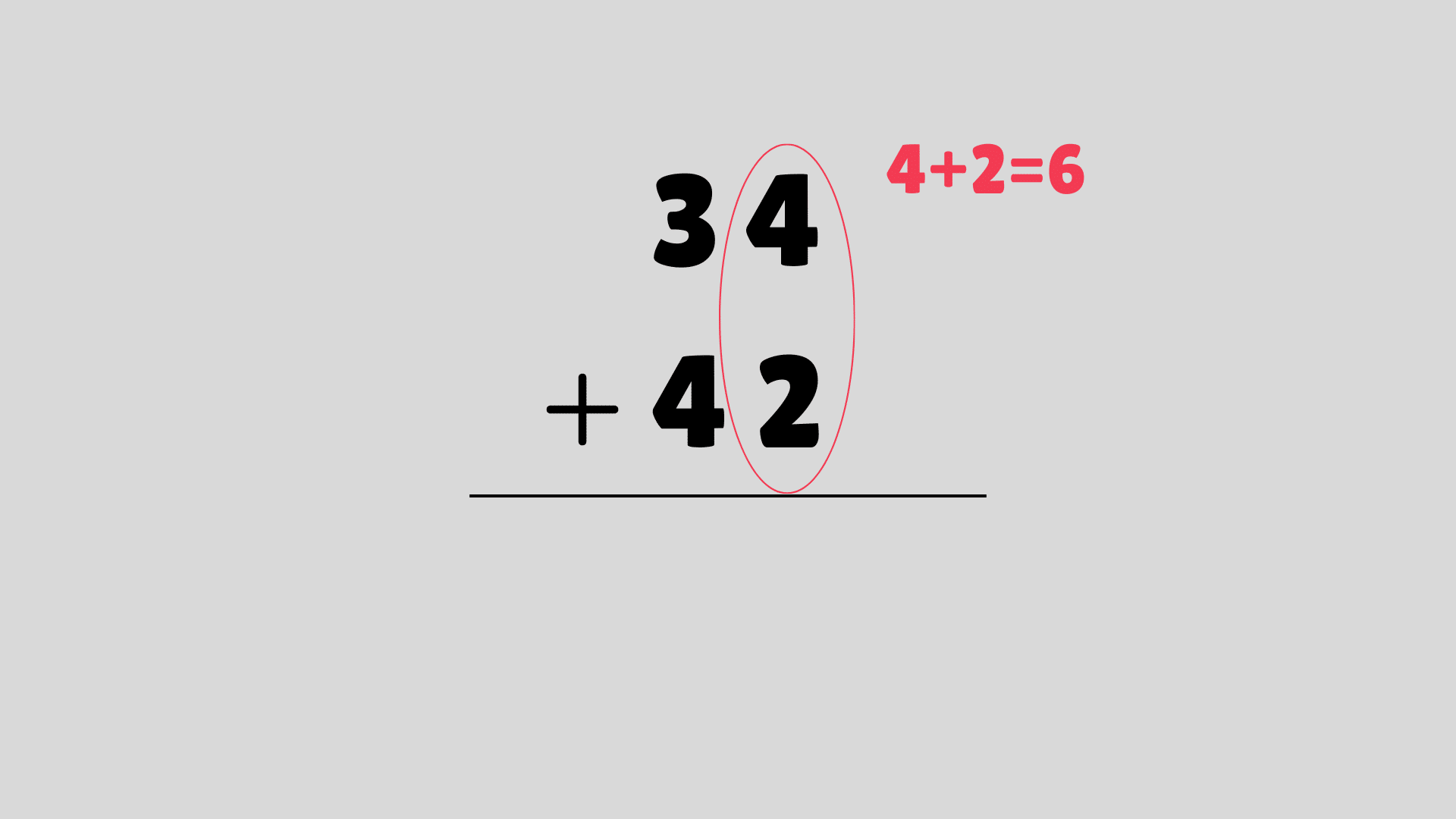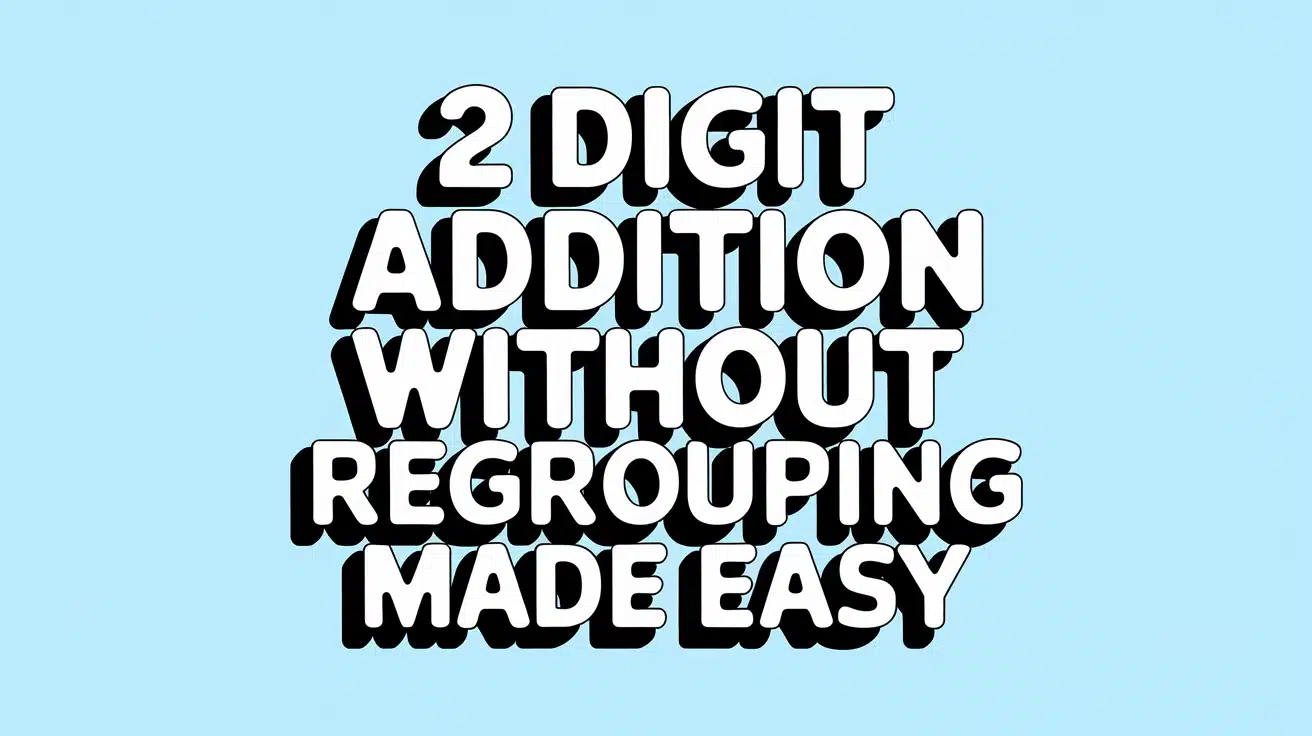Have you ever wondered how to add two numbers that are in the tens place without any carryovers? This is what we call 2-digit addition without regrouping.
It’s a basic math skill where you add two numbers, like 23 + 45, without needing to “carry” any value to the next column. This type of addition is perfect for building a strong math foundation, especially for young learners.
It helps them become comfortable with numbers and sets the stage for more complex operations later on.
In this blog, we’ll see what this type of addition is, how to do it, and common mistakes to avoid while you’re at it.
Understanding 2-Digit Addition Without Regrouping
It’s an easy method that helps you build strong math skills. Let’s take a closer look at how this type of addition works.
What is 2-Digit Addition Without Regrouping?
2-digit addition without regrouping means adding two numbers that don’t require you to carry any digits over to the next place value.
For example, when adding 34 + 42, you simply add the ones place and tens place separately.
Here’s how it works:
First, add the ones digits: 4 + 2 = 6.
Then, add the tens digits: 3 + 4 = 7.
So, 34 + 42 = 76.
There’s no need to move any numbers to the next column. It’s a simple process where each place value adds up without carrying over. This makes the math more straightforward.
Steps for Solving 2-Digit Addition Without Regrouping
2-digit addition without regrouping is an easy way to add numbers. By breaking it down into smaller parts, you can add the numbers without any confusion.
Step 1: Add the Ones Place

Start by looking at the ones place, which is the last digit of each number. For example, if you are adding 34 + 42, you first look at the numbers 4 and 2 in the ones place. Add these two numbers together. In this case, 4 + 2 equals 6. This is your sum for the ones place.
Step 2: Add the Tens Place

Next, move to the tens place. These are the digits in the second position from the right. For 34 + 42, the tens digits are 3 and 4. Now, add these two numbers: 3 + 4 equals 7. This gives you the sum for the tens place.
Step 3: Combine the Sums to Get the Final Result

Finally, you take the results from both the ones place and the tens place. You put these sums together to get the final answer. In the case of 34 + 42, you put the sum of the ones (6) next to the sum of the tens (7) to get the final answer, 76.
Examples with Solutions
1. 23 + 42
Add the ones place:
Start with the ones digits. 2 + 3 equals 5.
This is your sum for the ones place.Add the tens place:
Now, add the tens digits. 2 + 4 equals 6.
This is your sum for the tens place.Combine the sums:
Now, take the sum from the ones place (6) and the sum from the tens place (7). Combine them to get 76. This is the final answer.
Final answer: 23 + 42 = 65
2. 56 + 23
Add the ones place:
Look at the ones digits: 6 and 3. Add them together:
6 + 3 = 9.
This is the sum for the ones place.Add the tens place:
Now, add the tens digits: 5 and 2.
5 + 2 = 7.
This is the sum for the tens place.Combine the sums:
Combine the sums from the ones place (9) and the tens place (7). Together, they make 79.
Final answer: 56 + 23 = 79
3. 12 + 45
Add the ones place:
The ones digits are 2 and 5. Add them together:
2 + 5 = 7.
This is the sum for the ones place.Add the tens place:
Next, add the tens digits: 1 and 4.
1 + 4 = 5.
This is the sum for the tens place.Combine the sums:
Finally, combine the sum of the ones (7) and the sum of the tens (5). The final result is 57.
Final answer: 12 + 45 = 5
By following three easy steps, you can solve 2-digit addition problems without worrying about carrying over any numbers. This method is straightforward and works every time. It’s a great way to practice and get better at addition.
Why this Skill is Important for Young Learners
Learning 2-digit addition without regrouping helps young learners develop basic number sense, which is crucial for future math success.
It introduces them to the concept of place value, making it easier for them to understand how numbers work together. This skill also improves their ability to focus and solve problems step by step.
When children are confident in adding numbers without carrying over, they can quickly grasp more advanced topics like multiplication and division.
It lays the groundwork for logical thinking and helps build mental math skills, preparing them for more complex math as they grow.
Common Mistakes to Avoid
When doing 2-digit addition without regrouping, some common mistakes can happen.
One mistake is forgetting to add correctly in the ones or tens place. For example, when adding 34 + 42, ensure that you add 4 + 2 in the ones place and 3 + 4 in the tens place.
Another mistake is misaligning the digits. Always make sure the ones digits are lined up under each other and the tens digits are lined up too.
To help kids avoid these mistakes, it’s important to remind them to check their work. Teachers and parents can encourage kids to write numbers carefully and show each step of the process.
A great tip is to start with simple problems and gradually increase the difficulty. Giving clear examples and practicing together will build confidence and reduce errors. Regular practice is key to improving these skills.
Conclusion
Understanding 2-digit addition without regrouping is a key skill that builds a strong foundation for future math.
Parents and teachers can support kids by offering regular practice and using fun, interactive tools to keep them engaged. Consistent practice makes learning easier and more enjoyable.
Encourage kids to take their time and always check their work. By learning this skill, they will feel more confident with math overall.
Keep practicing, and don’t forget to search for more related content to continue growing your math skills! Be sure to check out other blogs for helpful tips and tricks.




